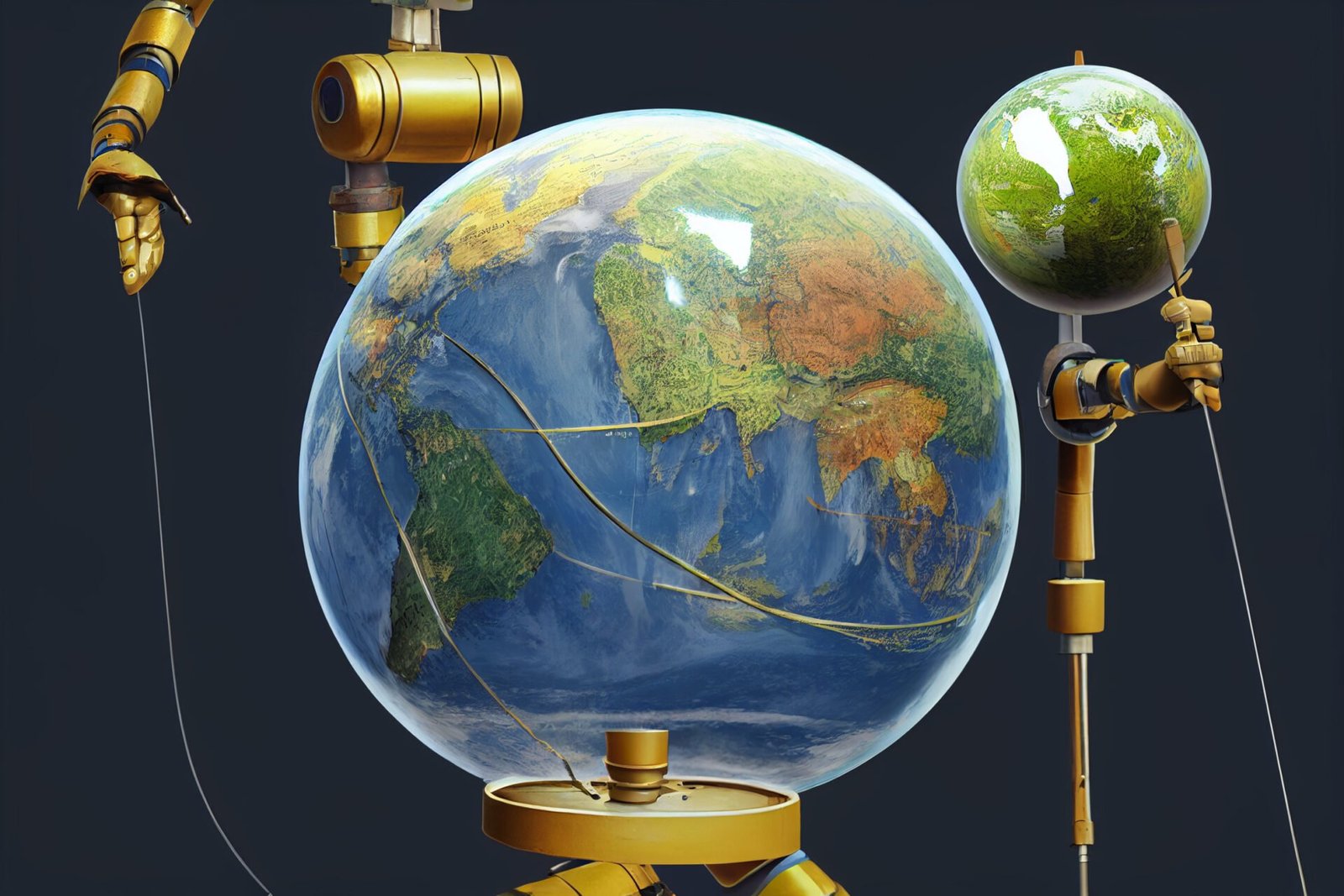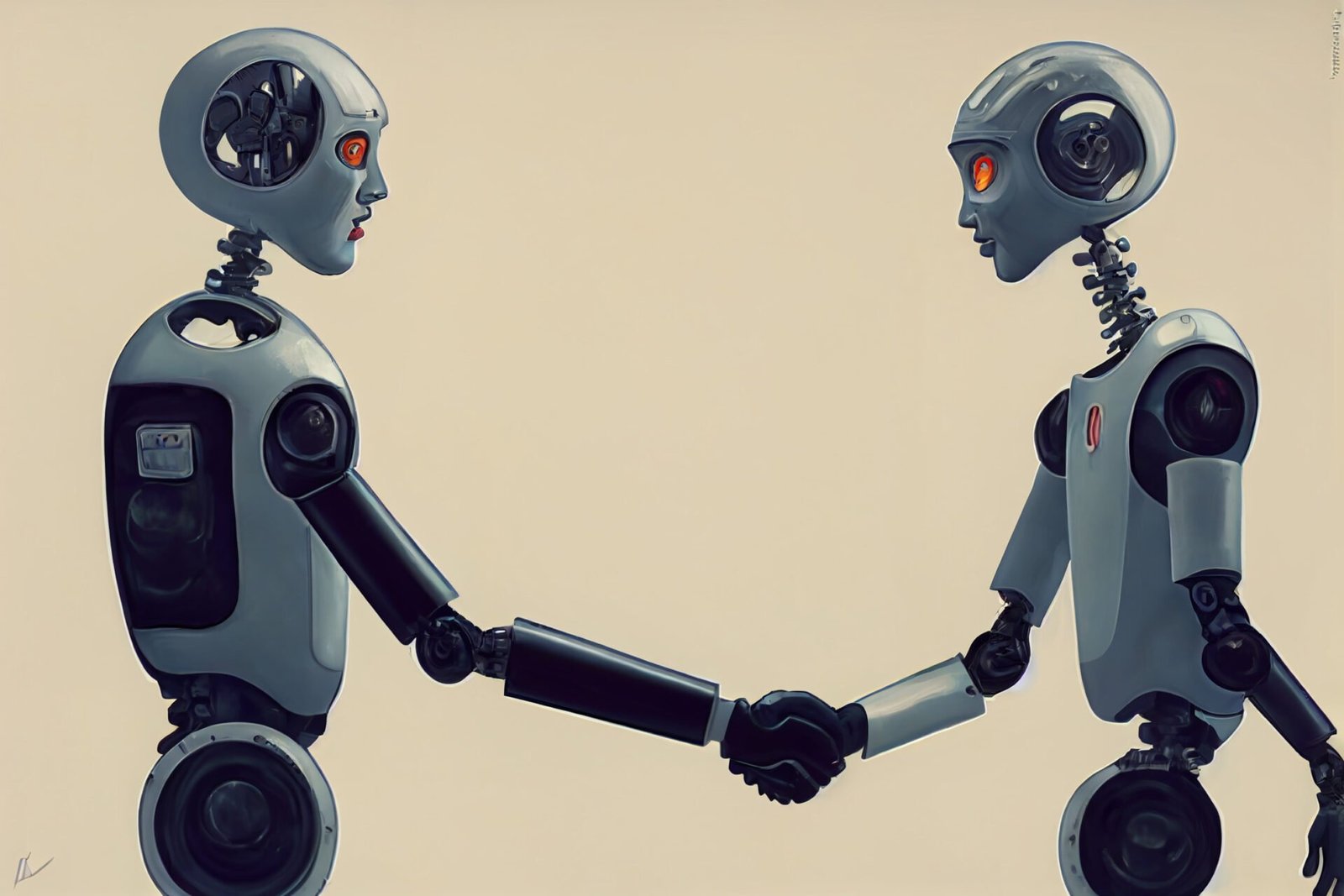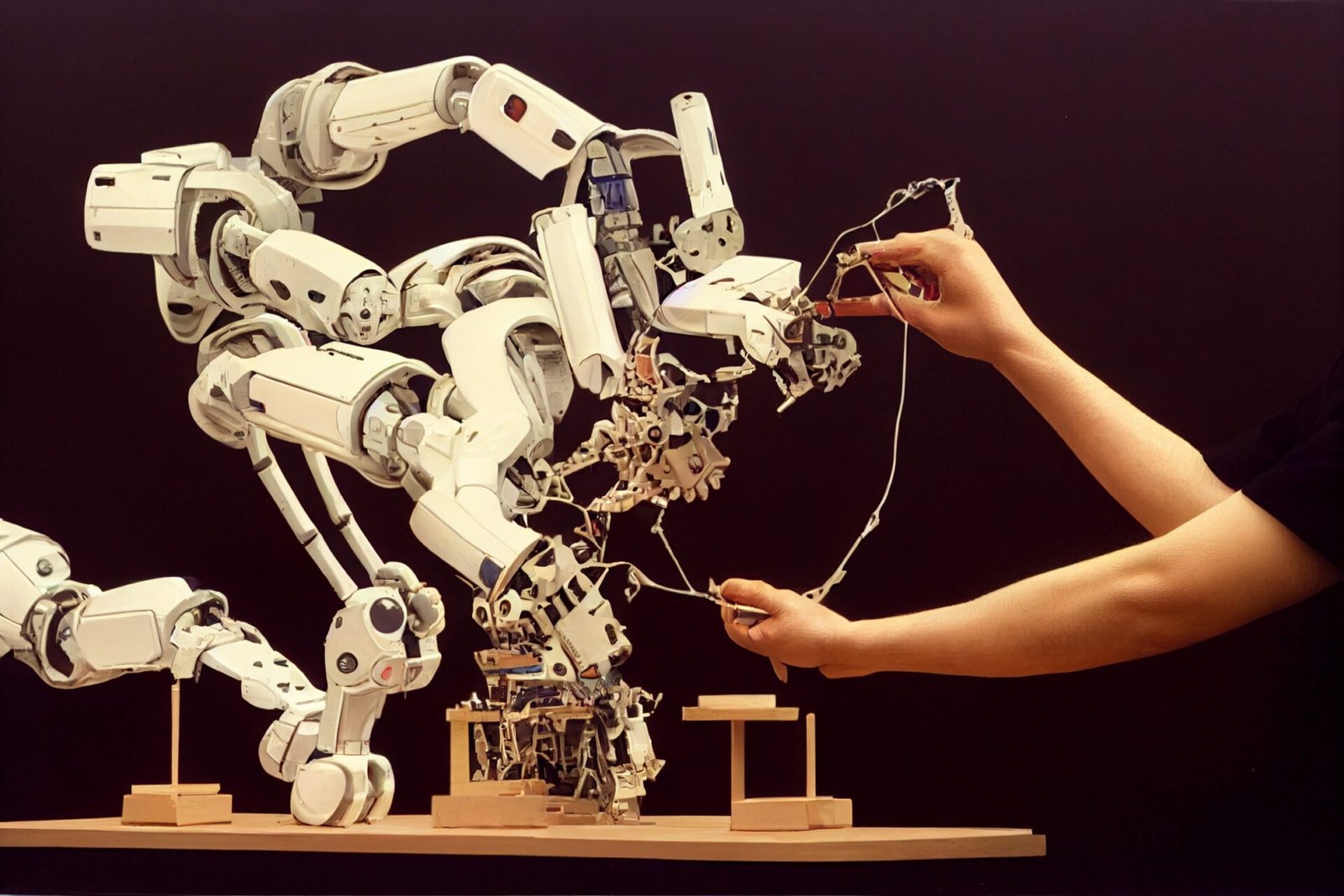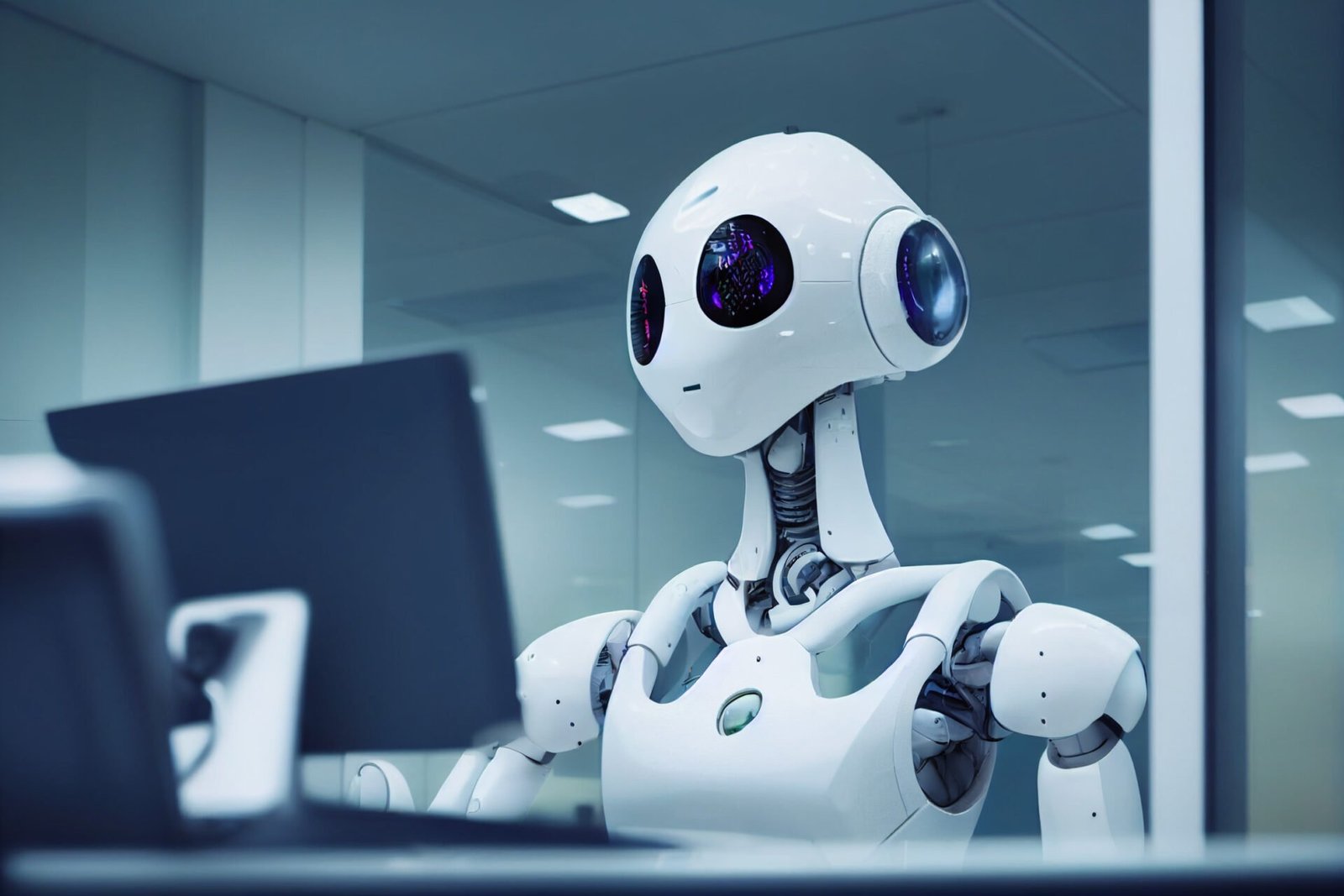AI Ethics And AI Law Clarifying What In Fact Is Trustworthy AI

WoahAI
Woah Lab Generator
Will we be able to gain trustworthy AI, and in that case, how?
Trust is everything, in order that they say.
The noted logician Lao Tzu said that those who do not trust sufficient will no longer be relied on. Ernest Hemingway, an esteemed novelist, said that the first-class way to discover if you can believe any individual is through trusting them.
Meanwhile, evidently trust is each precious and brittle. The accept as true with that one has can crumble like a residence of cards or abruptly burst like a popped balloon.
The historical Greek tragedian Sophocles asserted that believe dies but mistrust blossoms. French logician and mathematician Descartes contended that it’s far prudent never to accept as true with wholly the ones who’ve deceived us even as soon as. Billionaire business investor extraordinaire Warren Buffett exhorted that it takes 20 years to build a sincere recognition and 5 minutes to destroy it.
You is probably amazed to recognize that all of these various views and provocative opinions about consider are critical to the appearance of Artificial Intelligence (AI).
Yes, there is something keenly known as trustworthy AI that maintains getting a heck of lots of interest in recent times, which includes handwringing catcalls from within the discipline of AI and additionally boisterous outbursts with the aid of the ones out of doors of the AI realm. The normal perception involves whether or not or not society is going to be willing to location agree with in the likes of AI systems.
Presumably, if society won’t or can’t believe AI, the odds are that AI structures will fail to get traction. AI as we know it presently will get pushed aside and simply collect dirt. Shockingly, AI may want to turn out to be on the junk heap, relegated historically to nothing more than a desperately tried but spectacularly failed high-tech experiment. Any efforts to reinvigorate AI would potentially face a remarkable uphill struggle and be stopped via all way of objections and outright protests. Ostensibly, because of a loss of believe in AI.
Which shall it be, are we to agree with in AI, or are we no longer to agree with in AI?
In essence, are we going to absolutely have straightforward AI?
Those are erstwhile and unresolved questions. Let’s unpack it.
AI Ethics And The Struggle For Trustworthy AI
The perception by using many inside AI is that the builders of AI systems can garner accept as true with in AI by way of correctly devising AI that is truthful. The essence is that you can’t wish to benefit trust if AI isn’t reputedly honest on the get-go. By crafting AI systems in a way that is seemed to be straightforward there’s a stable danger that people will take delivery of AI and adopt AI makes use of.
One qualm already nagging at this trustworthy AI attention is that we’d already be in a public accept as true with deficit in relation to AI. You may want to say that the AI we’ve already visible has dug a hole and been tossing asunder believe in large quantities. Thus, in preference to starting at some sufficient base of trustworthiness, AI is going to must astoundingly climb out of the deficit, clawing for every desired ounce of added believe on the way to be had to convince human beings that AI is in truth truthful.
Into this venture comes AI Ethics and AI Law.
AI Ethics and AI Law are struggling mightily with seeking to parent out what it will take to make AI straightforward. Some advise that there may be a components or ironclad legal guidelines on the way to get AI into the trustworthy heavens. Others indicate that it will take difficult work and regular and unrelenting adherence to AI Ethics and AI Law principles to get the vaunted trust of society.
The modern enigma about believe in AI is not mainly new consistent with se.
You can without problems move returned to the late Nineteen Nineties and hint the emergence of a sought-for choice for “trusted computing” from the ones days. This was a massive-scale tech-industry effort to determine if computer systems all informed will be made in a way that would be construed as trustworthy by way of society.
Key questions consisted of:
Could computer hardware be made such that it was truthful?
Could software be crafted such that it changed into straightforward?
Could we put in vicinity global networked computer systems that could be truthful?
And so on.
The prevailing sentiment then and that maintains to nowadays is that sincere computing stays a kind of holy grail that lamentably is still no longer pretty inside our reach (as mentioned in a paper entitled “Trustworthy AI” in the Communications of the ACM). You may want to convincingly argue that AI is yet another aspect of the computing trustworthiness envelopment, yet AI makes the trust pursuit even more tough and unsure. AI has emerge as the potential spoiler inside the combat to acquire straightforward computing. Possibly the weakest hyperlink in the chain, because it had been.
Let’s take a quick study why AI has gotten our dander up about being much less than trustworthy. In addition, we are able to explore the tenets of AI Ethics which can be was hoping will useful resource in propping up the already semi-underwater perceived consider (or effervescent mistrust) of today’s AI. For my ongoing and full-size coverage of AI Ethics, see the link here and the link here, just to name a few.
One precise section or portion of AI Ethics that has been getting a lot of media interest consists of AI that reveals untoward biases and inequities. You is probably conscious that once the modern technology of AI got underway there was a large burst of enthusiasm for what a few now call AI For Good. Unfortunately, on the heels of that gushing excitement, we started to witness AI For Bad. For instance, various AI-based totally facial reputation systems were found out as containing racial biases and gender biases, which I’ve discussed on the hyperlink here.
Efforts to fight again against AI For Bad are actively underway. Besides vociferous felony pastimes of reining in the wrongdoing, there’s additionally a noticeable push closer to embracing AI Ethics to righten the AI vileness. The perception is that we have to adopt and advocate key Ethical AI standards for the development and fielding of AI doing so to undercut the AI For Bad and simultaneously heralding and promoting the leading AI For Good.
On a associated notion, I am an advocate of seeking to use AI as a part of the answer to AI woes, preventing fireplace with hearth in that way of thinking. We may for instance embed Ethical AI additives into an AI device in order to screen how the relaxation of the AI is doing matters and thus doubtlessly catch in actual-time any discriminatory efforts, see my discussion at the hyperlink right here. We could also have a separate AI device that acts as a kind of AI Ethics screen. The AI gadget serves as an overseer to track and detect when another AI goes into the unethical abyss (see my analysis of such skills at the link right here).
In a moment, I’ll proportion with you a few overarching standards underlying AI Ethics. There are plenty of those styles of lists floating around right here and there. You could say that there isn’t as yet a singular listing of typical enchantment and concurrence. That’s the unfortunate news. The correct news is that as a minimum there are without difficulty available AI Ethics lists and that they have a tendency to be quite comparable. All instructed, this suggests that by way of a shape of reasoned convergence of types that we are finding our way in the direction of a fashionable commonality of what AI Ethics includes.
First, permit’s cover in brief a number of the general Ethical AI precepts to illustrate what need to be a essential attention for each person crafting, fielding, or the use of AI.
For example, as stated with the aid of the Vatican within the Rome Call For AI Ethics and as I’ve included in-intensity on the hyperlink right here, these are their diagnosed six number one AI ethics concepts:
Transparency: In principle, AI structures should be explainable
Inclusion: The desires of all people must be considered so that everybody can benefit, and all people can be offered the excellent feasible situations to explicit themselves and expand
Responsibility: Those who layout and installation using AI should continue with responsibility and transparency
Impartiality: Do not create or act in step with bias, for this reason safeguarding fairness and human dignity
Reliability: AI structures need to be capable of paintings reliably
Security and privacy: AI systems ought to work securely and recognize the privacy of users.
As stated via the U.S. Department of Defense (DoD) in their Ethical Principles For The Use Of Artificial Intelligence and as I’ve covered in-depth at the hyperlink here, those are their six number one AI ethics ideas:
Responsible: DoD personnel will workout suitable degrees of judgment and care even as final answerable for the improvement, deployment, and use of AI talents.
Equitable: The Department will take planned steps to decrease unintentional bias in AI skills.
Traceable: The Department’s AI talents might be developed and deployed such that relevant personnel possesses the ideal information of the generation, development techniques, and operational strategies relevant to AI abilities, which includes obvious and auditable methodologies, facts sources, and design process and documentation.
Reliable: The Department’s AI skills may have explicit, nicely-described uses, and the safety, safety, and effectiveness of such talents could be concern to testing and warranty inside the ones defined uses across their whole lifecycles.
Governable: The Department will design and engineer AI capabilities to fulfill their intended features whilst owning the ability to come across and avoid unintentional consequences, and the ability to disengage or deactivate deployed structures that show accidental conduct.
I’ve also mentioned diverse collective analyses of AI ethics ideas, inclusive of having blanketed a hard and fast devised via researchers that examined and condensed the essence of severa national and global AI ethics tenets in a paper entitled “The Global Landscape Of AI Ethics Guidelines” (published in Nature), and that my insurance explores at the hyperlink here, which brought about this keystone listing:
Transparency
Justice & Fairness
Non-Maleficence
Responsibility
Privacy
Beneficence
Freedom & Autonomy
Trust
Sustainability
Dignity
Solidarity
As you may immediately guess, looking to pin down the specifics underlying those standards can be extremely hard to do. Even extra so, the attempt to show the ones broad ideas into something completely tangible and designated enough to be used whilst crafting AI structures is also a hard nut to crack. It is straightforward to usual do a little handwaving about what AI Ethics precepts are and the way they ought to be normally determined, whilst it’s miles a miles more complicated scenario in the AI coding having to be the veritable rubber that meets the road.
The AI Ethics principles are to be used by AI developers, together with those who manipulate AI improvement efforts, or even those who in the end area and perform maintenance on AI systems. All stakeholders at some stage in the complete AI lifestyles cycle of development and utilization are taken into consideration inside the scope of abiding with the aid of the being-set up norms of Ethical AI. This is an vital spotlight on account that the usual assumption is that “only coders” or people who program the AI is concern to adhering to the AI Ethics notions. As in advance stated, it takes a village to plan and discipline AI, and for which the whole village has to be versed in and abide by AI Ethics precepts.
Let’s also make certain we are at the identical page approximately the nature of these days’s AI.
There isn’t any AI nowadays this is sentient. We don’t have this. We don’t realize if sentient AI might be feasible. Nobody can aptly expect whether or not we are able to acquire sentient AI, nor whether or not sentient AI will somehow miraculously spontaneously stand up in a shape of computational cognitive supernova (normally known as the singularity, see my coverage on the hyperlink here).
The sort of AI that I am that specialize in includes the non-sentient AI that we’ve today. If we desired to wildly speculate approximately sentient AI, this discussion should cross in a substantially extraordinary direction. A sentient AI could supposedly be of human satisfactory. You would want to take into account that the sentient AI is the cognitive equal of a human. More so, considering that some speculate we might have amazing-intelligent AI, it’s far viable that such AI should turn out to be being smarter than humans (for my exploration of amazing-intelligent AI as a possibility, see the insurance right here).
Let’s hold matters greater right down to earth and recall these days’s computational non-sentient AI.
Realize that today’s AI isn’t capable of “suppose” in any style on par with human wondering. When you interact with Alexa or Siri, the conversational capacities might seem corresponding to human capacities, however the truth is that it is computational and lacks human cognition. The modern-day technology of AI has made sizable use of Machine Learning (ML) and Deep Learning (DL), which leverage computational pattern matching. This has caused AI structures which have the appearance of human-like proclivities. Meanwhile, there isn’t any AI nowadays that has a semblance of common sense and nor has any of the cognitive wonderment of strong human thinking.
ML/DL is a shape of computational pattern matching. The usual method is which you bring together statistics about a decision-making challenge. You feed the data into the ML/DL computer fashions. Those fashions are seeking to discover mathematical styles. After finding such patterns, in that case discovered, the AI gadget then will use the ones patterns when encountering new records. Upon the presentation of new information, the patterns based on the “old” or ancient information are applied to render a cutting-edge decision.
I assume you may wager wherein this is heading. If people that have been making the patterned upon selections have been incorporating untoward biases, the odds are that the facts reflects this in diffused however good sized approaches. Machine Learning or Deep Learning computational sample matching will really attempt to mathematically mimic the facts hence. There is no semblance of common experience or other sentient factors of AI-crafted modeling per se.
Furthermore, the AI builders won’t comprehend what is going on both. The arcane arithmetic within the ML/DL might make it difficult to ferret out the now hidden biases. You would rightfully hope and expect that the AI developers might check for the doubtlessly buried biases, even though that is trickier than it’d appear. A stable chance exists that regardless of rather sizeable checking out that there can be biases nevertheless embedded in the sample matching models of the ML/DL.
You ought to relatively use the famous or infamous adage of garbage-in rubbish-out. The issue is, this is greater corresponding to biases-in that insidiously get infused as biases submerged inside the AI. The algorithm decision-making (ADM) of AI axiomatically becomes laden with inequities.
Not appropriate.
Let’s tie this to the query approximately truthful AI
We truly would not appear to be inclined to trust AI that showcases adverse biases and discriminatory movements. Our notion, in that case, could be that such AI is decidedly not sincere, for that reason we would lean in the direction of actively distrusting the AI. Without going overboard on an anthropomorphic contrast (I’ll say more about AI anthropomorphizing in a moment), a human that exhibited untoward biases might additionally be problem to rating as not being especially sincere.
Digging Into Trust And Trustworthiness
Maybe we have to test what we mean whilst affirming that we do or do no longer trust a person or some thing. First, remember several everyday dictionary definitions of consider.
Examples of what trust definitionally way are:
Assured reliance on the person, potential, strength, or reality of a person or something (Merriam-Webster on-line dictionary).
Reliance on the integrity, strength, capacity, surety, etc., of someone or aspect (Dictionary.Com)
Firm perception within the reliability, reality, capability, or strength of a person or something (Oxford Languages online dictionary).
I’d like to factor out that every one of these definitions check with “a person” and likewise talk to “some thing” as being potentially sincere. This is fantastic considering the fact that a few may insist that we best agree with people and that the act of trusting is reserved completely for humankind as our target of trustworthiness. Not so. You could have accept as true with on your kitchen toaster. If it appears to reliably make your toast and works automatically to achieve this, you can veritably have a semblance of accept as true with approximately whether the toaster is in truth sincere.
In that equal line of wondering, AI also can be the concern of our accept as true with perspective. The odds are that agree with associated with AI is going to be a lot greater complicated than say an earthly toaster. A toaster can handiest usually do a handful of actions. An AI device is likely to be a good deal greater complex and appear to operate less transparently. Our capability to assess and verify the trustworthiness of AI is bound to be lots tougher and proffer wonderful challenges.
Besides simply being more complicated, a normal AI device is stated to be non-deterministic and probably self-regulating or self-adjusting. We can in brief explore that perception.
A deterministic gadget has a tendency to do the identical things again and again once more, predictably and with a viably discernable pattern of the way it’s miles operating. You would possibly say that a common toaster toasts more or less the same manner and has toasting controls that slight the toasting, all of which might be typically predictable by the character using the toaster. In evaluation, complex AI structures are frequently devised to be non-deterministic, meaning that they might do pretty various things beyond what you would possibly have in any other case expected. This should partly additionally be further amplified if the AI is written to self-modify itself, an aspect that could advantageously allow the AI to improve inside the case of ML/DL, even though also can disturbingly cause the AI to falter or input into the ranks of AI badness. You may not know what hit you, in a way of talking, as you have been caught entirely off-guard by way of the AI’s actions.
What would possibly we do to attempt to convey AI toward trustworthiness?
One method consists of looking to ensure that the ones building and fielding AI are abiding by using a hard and fast of AI Ethics precepts. As cited by these AI researchers: “Trust is an mind-set that an agent will behave as predicted and may be relied upon to reach its intention. Trust breaks down after an errors or misunderstanding between the agent and the trusting person. The mental kingdom of trust in AI is an emergent property of a complex system, typically concerning many cycles of design, education, deployment, dimension of performance, regulation, redecorate, and retraining” (indicated inside the Communications of the ACM, “Trust, Regulation, and Human-in-the-Loop AI Within the European Region” through Stuart Middleton, Emmanuel Letouze, Ali Hossaini, and Adriane Chapman, April 2022).
The gist is if we will get AI builders to abide via Ethical AI, they with any luck will come to be producing straightforward AI. This is all properly and top, however it appears quite impractical on a real-world foundation, though it is absolutely a path worth pursuing.
Here’s what I imply.
Suppose a diligent attempt is undertaken by way of AI builders crafting an AI gadget for a few motive that we’ll commonly call X. They carefully ensure that the AI abides by using the transparency precepts of AI Ethics. They keenly make sure that privateness is certainly built into the AI. For almost all of the same old AI Ethics ideas, the AI developers exhaustively make sure that the AI meets the given principle.
Should you now believe that AI?
Allow me to assist percolate your mind on that open-ended query.
Turns out that cyber crooks controlled to infiltrate the AI and sneakily get the AI to perform X and yet additionally feed the cyber hackers all of the statistics that the AI is gathering. By doing so, these evildoers are insidiously undercutting the privateness precept. You are blissfully unaware that this is going on beneath the hood of AI.
With that delivered piece of data, I’ll ask you the equal question once more.
Do you agree with that AI?
I dare say that most humans might proper away claim that they usually do no longer agree with this specific AI. They might have depended on it in advance. They now prefer to no longer do not forget the AI truthful.
A few key insights primarily based in this easy instance are worth of contemplation:
Dynamics of Trust. Even the satisfactory of intentions to cover all of the bases of ensuring that AI Ethics is built into an AI gadget are not any guarantee of what the AI may come to be or become. Once the AI is located into use, outsiders can potentially undermine the Ethical AI accruements.
Undercutting Trust From Within. The act of undercutting the trustworthiness doesn’t always must be outsiders. An insider this is doing everyday renovation to the AI system may blunder and weaken the AI in the direction of being less sincere. This AI developer might be clueless approximately what they have wrought.
Inadvertent Compromises of Trust. A self-adjusting or self-regulating AI would possibly sooner or later regulate itself and veer into the untrustworthy territory. Perhaps the AI attempts to strengthen the transparency of the AI and but concurrently and inappropriately compromises the privateness sides.
Scattering Of Trust. Trying to achieve all the AI Ethics tenets to the equal utmost degree of trustworthiness is commonly no longer readily viable as they’re often at move-purposes or have other inherent ability conflicts. It is a rather idealized attitude to accept as true with that every one of the Ethical AI precepts are dreamily aligned and all achievable to a few equal maximizable degree.
Trust Can Be Costly To Attain. The cost to try to acquire a topnotch semblance of straightforward AI through mission the various extensive and exhaustive steps and abiding via the litany of AI Ethics principles is going to be extraordinarily high. You can without difficulty argue that the fee could be prohibitive in terms of having some AI structures into use that in any other case have essential price to society, even if the AI turned into let’s assume much less than best from a trustworthiness preference.
And so on.
Do not misread the previous remarks to suggest that we must somehow prevent the effort to very well build and subject straightforward AI. You might be summarily tossing out the infant with the bathwater, because it had been. The proper interpretation is that we do want to do the ones trusting activities to get AI into a honest attention, and but that on my own isn’t a therapy-all or a silver bullet.
Multi-Prong Paths To Trustworthy AI
There are crucial additional multi-pronged ways to strive toward truthful AI.
For instance, as I’ve formerly protected in my columns, a myriad of newly rising laws and rules regarding AI ambitions to force AI makers closer to devising honest AI, see the link here and the link right here.
These felony guardrails are crucial as an overarching method of making sure that those devising AI are held completely answerable for their AI. Without such capacity prison treatments and lawful penalties, those who pell-mell rush AI into the marketplace are probably to keep doing so with little if any severe regard for attaining honest AI. I would possibly significantly add, that if the ones laws and regulations are poorly devised or inadequately applied, they might lamentably undercut the pursuit of truthful AI, perhaps paradoxically and oddly fostering untrustworthy AI over straightforward AI (see my column discussions for further rationalization).
I actually have additionally been a staunch advocate for what I’ve been ardently regarding as AI mum or dad angel bots (see my coverage on the hyperlink right here). This is an upcoming technique or approach of trying to combat fireplace with hearth, particularly the usage of AI to useful resource us in coping with different AI that would or might not be sincere.
First, a few history context will be beneficial.
Suppose you’re opting to depend on an AI system which you are uncertain of its trustworthiness. A key difficulty could be which you are by myself for your attempts to ferret out whether the AI is to be relied on or not. The AI is doubtlessly computationally faster than you and might take advantage of you. You need a person or something to your facet to help out.
One angle is that there need to constantly be a human-in-the-loop on the way to serve to resource you as you’re utilizing an AI system. This though is a intricate answer. If the AI is working in real-time, which we’ll be discussing momentarily on the subject of the appearance of AI-based totally self-driving vehicles, having a human-in-the-loop might not be enough. The AI may be appearing in actual-time and by the point a designated human-in-the-loop enters the photo to parent out if the AI is operating properly, a catastrophic end result may have already passed off.
As an aside, this brings up any other issue about believe. We typically assign a agree with stage primarily based on the context or condition that we are facing. You might fully agree with your little one son or daughter to be trustworthy closer to you, however in case you are out hiking and decide to rely on the little one to inform you whether or not it’s far safe to step on the brink of a cliff, I think you would be clever to recollect whether or not the infant can provide that type of lifestyles-or-demise advice. The baby might achieve this earnestly and honestly, and nevertheless, be not able to effectively render such advice.
The same belief is related to consider with regards to AI. An AI gadget that you are the use of to play checkers or chess might be now not involved in any existence-or-death deliberations. You can be at extra ease together with your project of agree with. An AI-based totally self-using automobile this is barreling down a highway at high speeds calls for a far more strenuous stage of believe. The slightest blip by means of the AI riding device should lead immediately for your dying and the deaths of others.
In a posted interview of Beena Ammanath, Executive Director of the Global Deloitte AI Institute and author of the ebook Trustworthy AI, a similar emphasis on thinking about the contextual facets of wherein AI trustworthiness involves play: “If you’re constructing an AI answer that is doing affected person prognosis, fairness and bias are brilliant vital. But in case you’re building an algorithm that predicts jet engine failure, fairness and bias isn’t as crucial. Trustworthy AI is without a doubt a structure to get you began to reflect onconsideration on the scale of accept as true with inside your company” (VentureBeat, March 22, 2022).
When discussing truthful AI, you could construe this topic in a mess of methods.
For instance, trustworthy AI is something that all of us view as a ideal and aspirational aim, specifically that we have to be desirous of devising and promulgating sincere AI. There is any other utilization of the catchphrase. A extremely opportunity utilization is that honest AI is a nation of circumstance or measurement, such that someone would possibly assert that they’ve crafted an AI system that is an example of honest AI. You also can use the phrase straightforward AI to signify a technique or technique that can be used to gain AI trustworthiness. Etc.
On a associated be aware, I consider that you realise that now not all AI is the identical and that we have to take into account of not making blanket statements about all of AI. A particular AI gadget is likely to be drastically specific from every other AI device. One of those AI structures is probably rather trustworthy, even as the opposite might be marginally honest. Be cautious in in some way assuming that AI is a monolith that is either totally sincere or totally no longer truthful.
This is truely no longer the case.
I’d like to subsequent briefly cover a number of my ongoing studies about trustworthy AI that you would possibly find of hobby, masking the arising function of AI parent angel bots.
Here’s how it goes.
You could be armed with an AI gadget (an AI father or mother angel bot) that is devised to gauge the trustworthiness of some other AI device. The AI dad or mum angel bot has as a paramount awareness your protection. Think of this as even though you have got the approach to monitor the AI you’re relying upon via having a exceptional AI gadget for your veritable pocket, possibly jogging in your phone or different such gadgets. Your proverbial AI parent can compute on a foundation that the AI you are depending upon also does, operating at fast speeds and calculating the situation to hand in actual-time, far quicker than a human-in-the-loop could do so.
You may at an initial glance be wondering that the AI you’re already depending upon must have a few internal AI guardrails that do the same as this one at a time calculating AI parent angel bot. Yes, that could truely be desired. One qualm is that the AI guardrails constructed into an AI gadget is probably integrally and prejudicially aligned with the AI in keeping with se, hence the meant AI guardrail now not is able to in a feel independently confirm or validate the AI.
The contrasting concept is that your AI parent angel bot is an unbiased or third-birthday celebration AI mechanism that is distinct from the AI which you are relying upon. It sits out of doors of the other AI, last devoted to you and not dedicated to the AI being monitored or assessed.
A honest method of thinking about this can be expressed via the following simplified equation-like statements. We may say that “P” needs to probably agree with “R” to do a specific challenge “X”:
This could be the following while only human beings are worried:
Person P trusts man or woman R to do venture X.
When we choose to rely upon AI, the statement reshapes to this:
Person P trusts AI example-R to do project X.
We can upload the AI parent angel bot through announcing this:
Person P trusts AI instance-R to do task X as being monitored by means of AI parent angel bot example-Z
The AI guardian angel bot is tirelessly and relentlessly assessing the AI which you are depending upon. As such, your handy AI parent might warn you that the accept as true with of this different AI is unwarranted. Or, the AI mum or dad would possibly electronically interact with the other AI to attempt to ensure that whatever variance away from being truthful is speedy righted, and so forth (see my insurance on such info at the hyperlink right here).
The Trusty Trust Reservoir Metaphor
Since we are discussing varying degrees of consider, you may find of use a reachable metaphor approximately trustworthiness with the aid of conceiving of consider as a kind of reservoir.
You have a certain quantity of accept as true with for a particular character or issue in a specific circumstance at a specific factor in time. The level of the consider will upward push or fall, relying upon what else happens related to that precise character or aspect. The agree with may be at a zero level if you have no agree with in any way for the man or woman or factor. The accept as true with might be terrible while you task into having mistrust of that individual or factor.
In the case of AI systems, your consider reservoir for the specific AI which you are depending upon in a specific situation will upward push or fall as based upon your gauging the trustworthiness of the AI. At instances, you might be nicely aware about this varying degree of agree with about the AI, whilst in different instances you might be less conscious and more so by using slump making judgments approximately the trustworthiness.
Ways that we’ve been discussing herein the means to boost trust tiers for AI encompass:
Adherence to AI Ethics. If the AI which you are relying upon become devised through seeking to adhere to the right AI Ethics precepts, you possibly could use this information to boost the extent of your accept as true with reservoir for that precise AI device. As a facet note, it’s also possible that you might generalize to different AI systems as to their trustworthiness, likewise, although this will be at times a misleading shape of what I call AI consider aura spreading (be cautious in doing this!).
Use a Human-In-The-Loop. If the AI has a human-in-the-loop, you would possibly undoubtedly add for your perceived trust within the AI.
Establish Laws and Regulations. If there are laws and regulations associated with this unique type of AI, you might likewise improve your believe degree.
Employ an AI Guardian Angel Bot. If you have an AI mother or father angel bot on the equipped, this too will enhance in addition your trust degree.
As mentioned earlier, consider can be pretty brittle and crumble in an immediately (i.E., the believe reservoir unexpectedly and suddenly dumps out all of the built-up believe).
Imagine that you are inside an AI-based self-using automobile and the AI riding unexpectedly makes an intensive right turn, causing the wheels to squeal and nearly forcing the self sufficient vehicle into an endangering rollover. What might occur for your degree of trust? It might seem that even in case you previously held the AI to a heightened level of consider, you would dramatically and unexpectedly drop your trust degree, sensibly so.
At this juncture of this weighty discussion, I’d wager that you are desirous of additional illustrative examples that would show off the nature and scope of sincere AI. There is a unique and assuredly popular set of examples which might be near my heart. You see, in my potential as an expert on AI inclusive of the moral and prison ramifications, I am frequently asked to pick out practical examples that showcase AI Ethics dilemmas in order that the somewhat theoretical nature of the subject may be more effectively grasped. One of the most evocative regions that vividly affords this ethical AI dilemma is the appearance of AI-based proper self-riding automobiles. This will function a accessible use case or exemplar for ample dialogue on the topic.
Here’s then a noteworthy question that is well worth thinking of: Does the arrival of AI-based proper self-riding automobiles illuminate anything about the pursuit of truthful AI, and in that case, what does this showcase?
Allow me a second to unpack the query.
First, note that there isn’t a human driving force involved in a real self-riding vehicle. Keep in thoughts that authentic self-driving motors are driven through an AI riding device. There isn’t a need for a human motive force on the wheel, neither is there a provision for a human to drive the vehicle. For my extensive and ongoing insurance of Autonomous Vehicles (AVs) and particularly self-riding motors, see the hyperlink here.
I’d want to further clarify what is supposed after I talk to proper self-driving cars.
Understanding The Levels Of Self-Driving Cars
As a rationalization, authentic self-riding automobiles are ones where the AI drives the auto entirely on its own and there isn’t any human assistance at some stage in the riding undertaking.
These driverless motors are taken into consideration Level four and Level five (see my rationalization at this link here), while a vehicle that requires a human driver to co-proportion the using effort is typically taken into consideration at Level 2 or Level three. The vehicles that co-proportion the riding project are described as being semi-self reliant, and normally include plenty of automatic add-ons which might be called ADAS (Advanced Driver-Assistance Systems).
There isn’t yet a real self-driving automobile at Level 5, and we don’t yet even understand if this could be viable to attain, nor how lengthy it’ll take to get there.
Meanwhile, the Level four efforts are step by step seeking to get a few traction by way of present process very slim and selective public roadway trials, even though there is controversy over whether or not this checking out have to be allowed in step with se (we are all existence-or-loss of life guinea pigs in an experiment taking place on our highways and byways, a few contend, see my coverage at this link right here).
Since semi-self sufficient cars require a human motive force, the adoption of these forms of cars gained’t be markedly special than using traditional motors, so there’s no longer a good deal new in keeping with se to cowl approximately them on this topic (even though, as you’ll see in a second, the factors next made are typically applicable).
For semi-autonomous vehicles, it is critical that the public desires to be forewarned approximately a disturbing aspect that’s been bobbing up currently, namely that notwithstanding those human drivers that keep posting videos of themselves falling asleep at the wheel of a Level 2 or Level 3 vehicle, all of us want to avoid being misled into believing that the driving force can remove their interest from the driving undertaking even as driving a semi-independent car.
You are the responsible birthday party for the driving actions of the automobile, regardless of how a great deal automation is probably tossed right into a Level 2 or Level 3.
Self-Driving Cars And Trustworthy AI
For Level four and Level five true self-riding vehicles, there received’t be a human driver concerned in the driving assignment.
All occupants might be passengers.
The AI is doing the driving.
One component to without delay talk includes the reality that the AI worried in these days’s AI using systems isn’t sentient. In different words, the AI is altogether a collective of computer-based programming and algorithms, and maximum assuredly now not capable of cause inside the equal manner that people can.
Why is this brought emphasis approximately the AI no longer being sentient?
Because I need to underscore that when discussing the position of the AI using machine, I am now not ascribing human characteristics to the AI. Please be conscious that there’s an ongoing and dangerous tendency nowadays to anthropomorphize AI. In essence, human beings are assigning human-like sentience to nowadays’s AI, regardless of the simple and inarguable fact that no such AI exists as but.
With that explanation, you can envision that the AI riding machine received’t natively come what may “understand” approximately the aspects of riding. Driving and all that it includes will need to be programmed as a part of the hardware and software of the self-using vehicle.
Let’s dive into the myriad of factors that come to play on this subject matter.
First, it’s miles vital to realize that now not all AI self-riding cars are the same. Each automaker and self-riding tech organization is taking its technique to devising self-using vehicles. As such, it’s miles hard to make sweeping statements about what AI driving systems will do or not do.
Furthermore, whenever declaring that an AI riding system doesn’t perform a little specific component, this could, afterward, be overtaken by builders that in truth application the computer to do that very aspect. Step through step, AI driving systems are being step by step improved and prolonged. An current obstacle nowadays may not exist in a future new release or model of the gadget.
I consider that offers a sufficient litany of caveats to underlie what I am about to relate.
We are primed now to do a deep dive into self-driving motors and honest AI.
Trust is the entirety, especially in the case of AI-based self-riding motors.
Society appears to be warily eyeing the emergence of self-using motors. On the one hand, there is a grand hope that the advent of proper self-riding automobiles will demonstrably lessen the variety of annual car-related fatalities. In the United States on my own there are approximately forty,000 annual deaths and round 2.5 million accidents because of car crashes, see my collection of stats at the link here. Humans drink and pressure. Humans drive even as distracted. The mission of using a vehicle appears to include being able to repetitively and unerringly focus on riding and keep away from entering into automobile crashes. As such, we would dreamily desire that AI riding structures will manual self-using automobiles repetitively and unerringly. You can construe self-using cars as a twofer, together with reducing the extent of car crash deaths and accidents, along with potentially making mobility to be had on a much wider and on hand basis.
But the priority in the meantime looms over societal perceptions as to whether self-driving vehicles are going to be secure sufficient to be on our public roadways at big.
If even one self-using car gets right into a crash or collision that results in a single demise or intense injury, you could probably expect that nowadays’s relatively built-up agree with closer to those AI-primarily based driverless cars goes to precipitously drop. We noticed this happen whilst the now-notorious incident happened in Arizona that involved a relatively (no longer sincerely) self-riding automobile that bumped into and killed a pedestrian (see my coverage at this hyperlink right here).
Some pundits point out that it is unfair and beside the point to base the consider of AI self-using motors on the aspect that simplest one such subsequent loss of life-generating crash or collision should undermine the already fairly crash-free public roadway trials. In addition, on a similarly unfair foundation, the percentages are that irrespective of which particular AI self-riding vehicle emblem or model possibly receives embroiled in a sorrowful incident, society might for sure blame all self-using automobile manufacturers.
The entirety of self-using cars might be summarily smeared and the enterprise as an entire would possibly go through a huge backlash main to a likely shutdown of all public roadway trials.
A contributor to any such blowback is discovered within the nonsensical proclamations by outspoken self-using automobile proponents that every one driverless motors can be uncrashable. This concept of being uncrashable is not only outrightly wrong (see the hyperlink right here), it insidiously is setting up the self-riding vehicle enterprise for a very out-of-whack set of expectancies. These outlandish and unachievable pronouncements that there could be 0 deaths because of self-driving motors are fueling the misconception that any driverless automobile crashes are a sure signal that the complete package and kaboodle is for naught.
There is a wonderful disappointment to recognize that the progress in the direction of self-riding automobiles and the inch-at-a-time accumulation of societal consider could be dashed away in an instant. That is going to be one heck of a showcase approximately the brittleness of consider.
Conclusion
Many automakers and self-using tech corporations are usually abiding by AI Ethics concepts, doing so to try to build and area trustworthy AI in phrases of safe and dependable AI-based self-driving vehicles. Please comprehend that a number of those firms are more potent and more dedicated to the Ethical AI precepts than others. There also are occasional fringe or newbie self-using vehicle-related startups that seem to cast aside plenty of the AI Ethics cornerstones (see my overview at the hyperlink here).
On different fronts, new laws and policies overlaying self-driving automobiles have step by step been getting placed at the legal books. Whether they have the wanted teeth to back them up is a different rely, as likewise whether the enforcement of these laws is being taken significantly or ignored (see my columns for analyses in this).
There is also the high-tech perspective to this too. I have anticipated that we will progressively see variations of AI mum or dad angel bots in order to come to the fore in the autonomous automobile and self-using automobiles arena. We aren’t there yet. This turns into extra accepted once the recognition of self-using motors becomes more significant.
This last point brings up a well-known line about believe that you certainly already know through heart.
Trust, however verify.
We can permit ourselves to increase our trust, possibly generously so. Meanwhile, we should additionally be looking like a hawk to make sure that the agree with we engender is validated through both phrases and deeds. Let’s placed some believe into AI, however confirm without end that we’re placing our believe accurately and with our eyes extensive open.
You can consider me on that.
Start creating content with WoahAI today
Sign up today and gain access to our free artificial intelligence content generation Workshops via WoahLab.com!










